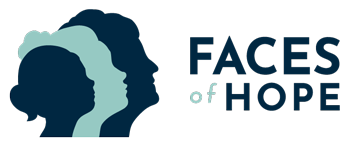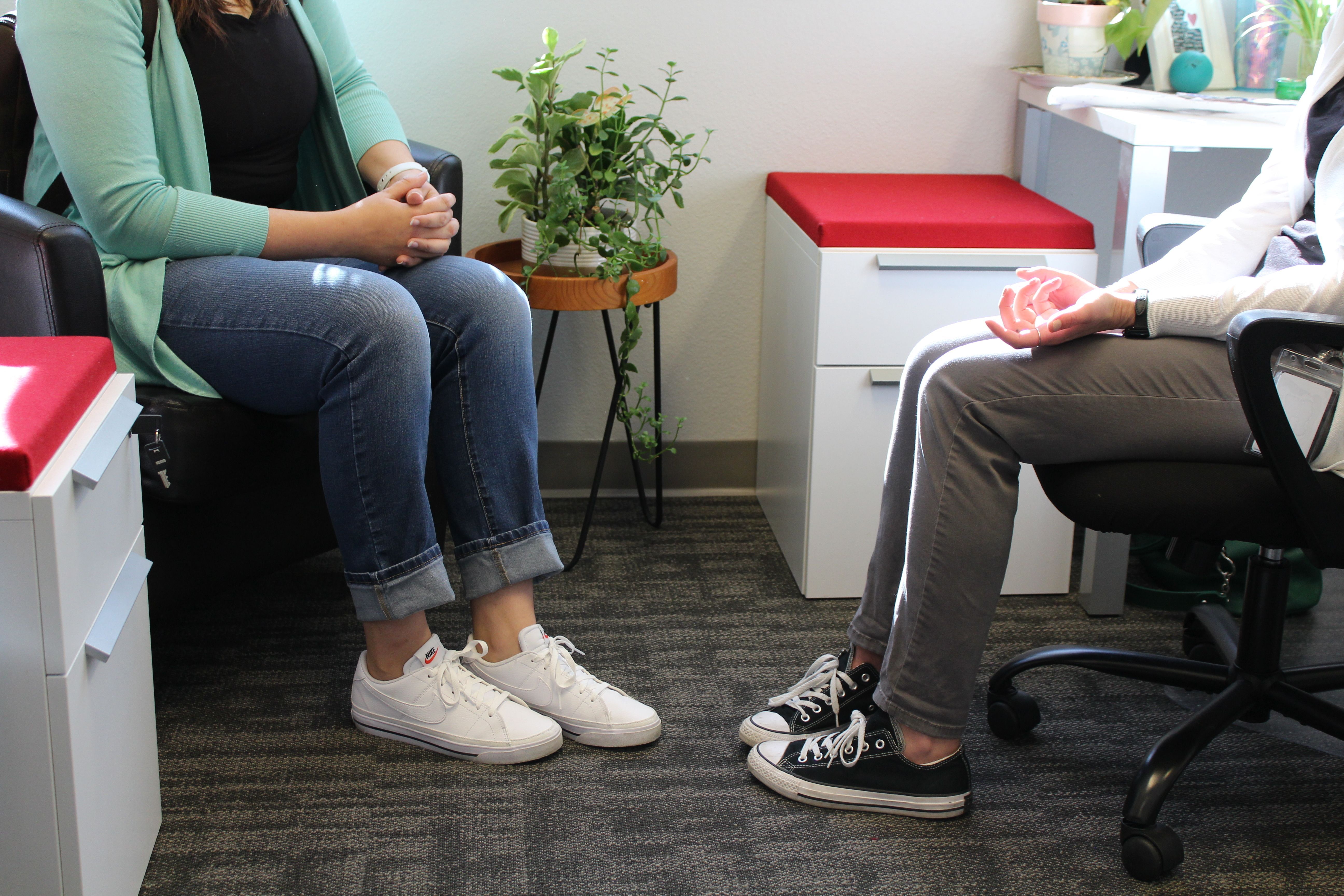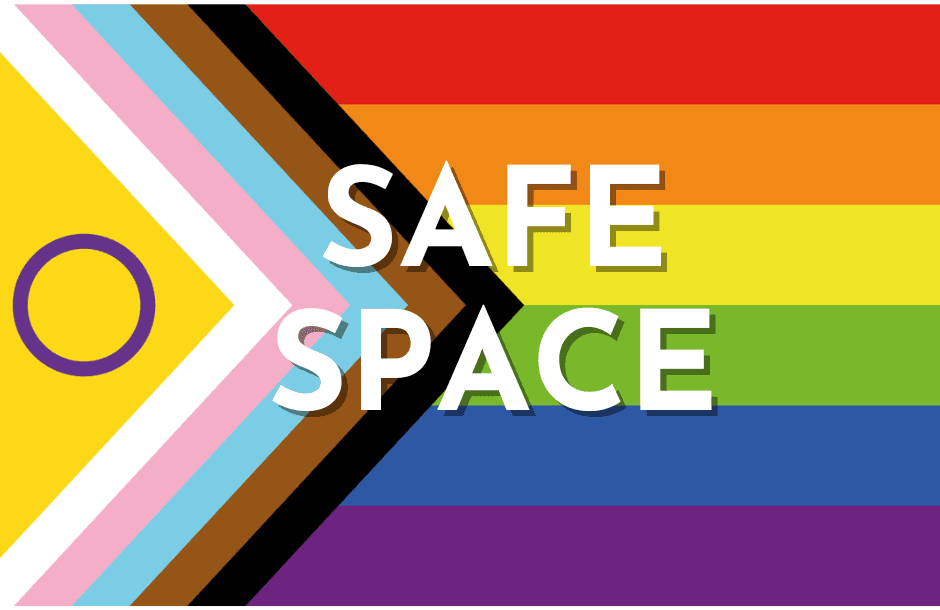-
What services are available?
Our current list of services can be found here. If you would like to find out more information on these services, please reach out to one of our Advocates at (208) 986-HELP. Walk-ins are also welcome M-F 8am-5 pm.
-
When is Faces of Hope open?
We are open Monday through Friday from 8 a.m. to 5 p.m., except for some federal holidays when we are closed, which will be accurate on Google Maps. Walk-in intakes are available from 9 a.m. to 4 p.m. You may also call to complete an intake over the phone at (208) 986-HELP. If you are in immediate danger, always call 911.
-
Do I need an appointment?
No, initial appointments are not necessary. We will see you on a first-come, first-served basis and will schedule follow up appointments at that time. You can schedule an intake to start receiving care, if you would prefer to let us know you're coming - (208) 986-HELP.
-
Where is Faces of Hope located?
Our Boise office is located at 209 W. Main St, Boise, ID 83702. Our Meridian office is located at 1850 S. Eagle Rd, Suite 100, Meridian, ID 83642. The same services are available at both locations.
-
Will anyone find out if I was at Faces of Hope?
All client records and information are kept in the strictest of confidence. Information will not be shared without a written release form from the client or where legal exceptions exist.
-
Is there a cost for services at Faces of Hope?
No. We are a nonprofit organization and all services are provided to you free of charge. We do not ask for insurance.
-
Can I bring my children with me?
You may bring your children to Faces of Hope as we have a specially designed area in the reception, where children can play while you are receiving services. Any child you cannot find care for is welcome and will be supervised by staff, interns, or volunteers who have background checks and have received trauma-informed training.
-
May I bring a friend or family member with me for support?
Yes. However, when you meet with one of our specialized professionals, your friend or family member may be asked to wait for you in the waiting area. They may also request to speak with another Advocate, if they would like additional information on supporting you as their friend or family member.
-
Is Faces of Hope safe?
Yes. We have locked doors to both facilities can only be accessed with a key card. Offenders are not welcomed into the building or offered services.
-
Are services available in other languages?
Yes. If you need an interpreter, we will provide this service to you, at no cost.
-
Is Faces of Hope accessible to persons with physical disabilities?
Faces of Hope Meridian is fully accessible. Faces of Hope Boise is working hard to combat the challenges of renting a turn-of-the-century building to become more accessible for persons with disabilities. We have two designated handicap parking spots, one in front of the building, and one in the back parking lot in the spot closest to the wheelchair ramp at the front door. Read our 2025 Boise Center ADA report here.
-
Can I access Faces of Hope services if I do not have legal immigration status?
Yes, services are available no matter what your immigration status is. While we perform a safety check at reception, it does not look for immigration status. Federal and state laws provide protection for all survivors of intimate partner violence, sexual violence, and child abuse, regardless of the individual’s country of origin, citizenship, or immigration status. Faces of Hope’s services are offered free and confidentially to all persons.
The Violence Against Women Reauthorization Act provides protection for undocumented individuals, who are victims of intimate partner violence, sexual violence, and stalking. No person in the United States can be denied benefits to any program or activity made available under this act based on national origin.
-
Can I get help completing a protection order at Faces of Hope?
Yes. Plus, there is no cost for filing a protection order. Here is a link to the Protection Order paperwork.
-
What is mandatory reporting?
In the State of Idaho, EVERY adult is mandated by law to report suspected or known abuse to a child, elder, or dependent adult. Staff must also make a report if you express a desire to commit an act, which would hurt yourself (suicide) or another person (homicide). Reports are made in the interest of keeping you and your family safe. Otherwise, if you are still deciding whether or not you would like to file a police report or pursue legal action, you are welcome at Faces of Hope. We are here to offer you resources to make an informed decision.
-
Do I need to file a police report to receive services?
No. Those who are over 18 are never required to speak to law enforcement to receive help from Faces of Hope. We will meet you where you are at in your journey. If you would like our staff to bring in an officer to file a police report, we are happy to do so and will sit with you for support. These reports are made in a safe and quiet room.
-
Do I need to have a criminal court case to go to Faces of Hope?
No. Anyone who has experienced interpersonal violence (domestic or sexual violence, child abuse, elder abuse, stalking, or human trafficking) can utilize services at Faces of Hope, regardless of whether or not you have filed a case against your abuser.
-
Can I return to Faces of Hope for services at a later date?
Yes. We encourage you to take advantage of all appropriate services. We provide short-term care, so we will help you get connected with long-term resources if you desire.
-
Who does Faces of Hope provide services to?
Faces of Hope provides services to all who have experienced domestic violence, sexual assault, child abuse, elder abuse, stalking, and human trafficking - including men, women, children, non-binary and transgender individuals. We do not discriminate in the delivery of services based on race, color, religion, gender, gender expression, age, national origin, marital status, or sexual orientation. Due to the sensitive nature of our operations, we are unable to serve those who have a criminal charge or conviction against them related to child abuse, domestic violence, etc.
Domestic Violence
What is Domestic Violence?
Domestic violence is the abusive behavior, in an intimate relationship, by one person to gain or maintain power and control over the other. This could involve physical, sexual, emotional, psychological, financial, and stalking/harrassment actions or threats. Such behaviors are classified as domestic violence even after one partner has ended the relationship. It affects individuals, regardless of age, gender, education, economic status, race, religion, and sexual orientation. It can happen to couples who are married, living together, or who are dating. Abuse is never the fault of the victim and it can be hard for many reasons, including safety, to end the relationship.
If you are in an abusive relationship, or think that you are, support and safety are critical. Here are some examples of abuse:
-
PHYSICAL ABUSE
Physical abuse can instill an environment with constant fear. It does not always leave marks or cause permanent damage. Physical violence may include:
- Hitting, slapping, punching, or kicking you
- Scratching, biting, or grabbing you
- Shoving or pushing you
- Strangling or smothering you
- Destroying your property or treasured possessions
- Throwing objects to hurt or intimidate you
- Attacking or threatening to attack you with a weapon
- Any threats or actual attempts to kill you
- Hurting or threatening to hurt your children and/or pets
- Interrupting your sleep
- Denying you medical treatment
- Denying you access or neglecting your basic needs like clothing, food, and shelter
If physical abuse is present early in the relationship, it commonly gets worse over time, especially during pregnancy or when you try to leave. While physical abuse is the form of abuse that is most commonly known, it may or may not be part of an abusive relationship. There are many forms of non-physical abuse.
-
EMOTIONAL/PSYCHOLOGICAL ABUSE
Emotional/psychological abuse is a behavior your partner uses to control you or damage your emotional well-being. It can be verbal or non-verbal, and it can be subtle or overt. Emotional/psychological abuse is present in all abusive relationships, in some form or another. Abuse may include:
- Name-calling or intimidating you
- Mocking you or making humiliating remarks or gestures
- Acting superior; placing little value on what you do or say
- Yelling at you or standing is a menacing way
- Threatening or making you fearful
- Manipulating your children
- Telling you what to do or where you can and cannot go
- Interrupting, changing topics, not listening or responding, and twisting your words
- Putting you down in front of other people
- Saying negative things about your friends and family
- Isolating you from your friends or relatives
- Cheating or being excessively jealous; accusing you of having affairs
- Minimizing the abuse or blaming you or others for their behavior
- Watching where you go; monitoring your phone calls, texts, car, and computer use
-
ECONOMIC/FINANCIAL ABUSE
Economic/financial abuse happens when the abuser makes you entirely financially dependent upon them. It occurs in 98% of all cases of domestic violence. For many people, this is the reason they feel that they cannot leave an abusive relationship. Financial abuse may include:
- Denying you access to bank accounts; hiding assets
- Running up debt your name; ruining your credit
- Taking your money; withholding money or giving you an allowance
- Not letting you earn your own money
- Jeopardizing employment by stalking or harassing you at your workplace
- Denying access to a vehicle or damaging the vehicle, so that you cannot get to work
- Sabotaging employment or educational opportunities
-
STALKING AND HARASSMENT
Economic/financial abuse happens when the abuser makes you entirely financially dependent upon them. It occurs in 98% of all cases of domestic violence. For many people, this is the reason they feel that they cannot leave an abusive relationship. Financial abuse may include:
- Denying you access to bank accounts; hiding assets
- Running up debt your name; ruining your credit
- Taking your money; withholding money or giving you an allowance
- Not letting you earn your own money
- Jeopardizing employment by stalking or harassing you at your workplace
- Denying access to a vehicle or damaging the vehicle, so that you cannot get to work
- Sabotaging employment or educational opportunities
Sexual Violence
What is Sexual Violence?
- Sexual contact or behavior that occurs without explicit consent of the victim
- Sexual violence is defined as a sexual act committed against someone without that person’s freely given consent.
- Sexual violence means that someone forces or manipulates someone else into unwanted sexual activity without their consent.
- Any sexual act, attempt to obtain a sexual act, unwanted sexual comments or advances, or acts to traffic, or otherwise directed, against a person’s sexuality using coercion, by any person regardless of their relationship to the victim, in any setting, including but not limited to home and work.
Sexual violence frequently goes hand in hand with coercion. Coercion can encompass:
- varying degrees of force;
- psychological intimidation;
- blackmail; or
- threats (of physical harm or of not obtaining a job/grade etc.)
-
TYPES OF SEXUAL VIOLENCE
Sexual violence includes, but is not limited to:
- rape within marriage or dating relationships
- rape by strangers or acquaintances
- unwanted sexual advances or sexual harassment (at school, work etc.)
- systematic rape, sexual slavery and other forms of violence, which are particularly common in armed conflicts (e.g. forced impregnation)
- In addition, sexual violence may also take place when someone is not able to give consent – for instance, while intoxicated, drugged, asleep or mentally incapacitated.
-
PHYSICAL EFFECTS OF SEXUAL VIOLENCE
- Chronic pain
- Gastrointestinal disorders
- Gynecological complications
- Migraines and other frequent headaches
- Sexually transmitted infections
- Cervical cancer
- Genital injuries
-
PSYCHOLOGICAL EFFECTS OF SEXUAL VIOLENCE
- Emotional detachment
- Sleep disturbances
- Flashbacks
- Mental replay of assault
- Shock
- Low self-esteem/self-blame
- Diminished interest/avoidance of sex
- Post-traumatic stress disorder
- Attempted or completed suicide
- Generalized anxiety
- Depression
- Symptoms of post-traumatic stress disorder
- Distrust of others
- Nervousness
- Shame or guilt
- Withdrawal
- Anxiety
- Confusion
- Fear
- Denial
-
SOCIAL EFFECTS OF SEXUAL VIOLENCE
- Strained relationships with family, friends, and intimate partners
- Isolation or ostracism from family or community
- Lower likelihood of marriage
- Less frequent contact with friends and relatives
- Less emotional support from friends and family
-
STATISTICS ON SEXUAL VIOLENCE
- Among female rape victims, perpetrators were reported to be intimate partners (51.1%), family members (12.5%), acquaintances (40.8%) and strangers (13.8%)
- In a nationally representative survey of adults, 37.4% of female rape victims were first raped between ages 18-24.
- Among female victims of partner violence who filed a protective order, 68% reported they were raped by their intimate partner and 20% reported a rape-related pregnancy.
- Of adults, 73% knew the attacker, 38% were friends of the attacker, 28% were an intimate partner of the attacker, and 7% were a relative of the attacker
- Perpetrators of acquaintance rape might be a date, but they could also be a classmate, a neighbor, a friend’s significant other, or any number of different roles.
Elder Abuse
What is Elder Abuse?
Elder abuse (also called “elder mistreatment,” “senior abuse,” “abuse in later life,” “abuse of older adults,” “abuse of older women,” and “abuse of older men”) is “a single, or repeated act, or lack of appropriate action, occurring within any relationship where there is an expectation of trust, which causes harm or distress to an older person.”
There are several types of abuse of older people that are generally recognized as being elder abuse, including:
Physical : e.g. hitting, punching, slapping, burning, pushing, kicking, restraining, false imprisonment / confinement, or giving excessive or improper medication as well as withholding treatment and medication.
Psychological/Emotional: e.g. humiliating a person. A common theme is a perpetrator who identifies something that matters to an older person and then uses it to coerce an older person into a particular action. It may take verbal forms such as yelling, name-calling, ridiculing, constantly criticizing, accusations, blaming, or non verbal forms such as ignoring, silence, shunning or withdrawing affection.
Elder financial abuse: also known as financial exploitation, involving misappropriation of financial resources by family members, caregivers, or strangers, or the use of financial means to control the person or facilitate other types of abuse.
Sexual: e.g. forcing a person to take part in any sexual activity without his or her consent, including forcing them to participate in conversations of a sexual nature against their will; may also include situations where person is no longer able to give consent (dementia).
Neglect: e.g. depriving a person of proper medical treatment, food, heat, clothing or comfort or essential medication and depriving a person of needed services to force certain kinds of actions, financial and otherwise. Neglect can include leaving an at-risk (i.e. fall risk) elder person unattended. The deprivation may be intentional (active neglect) or happen out of lack of knowledge or resources (passive neglect).
-
WARNING SIGNS OF ELDER ABUSE
The key to prevention and intervention of elder abuse is the ability to recognize the warning signs of its occurrence. Signs of elder abuse differ depending on the type of abuse the victim is suffering. Each type of abuse has distinct signs associated with it.
- Physical abuse can be detected by visible signs on the body, including bruises, scars, sprains, or broken bones. More subtle indications of physical abuse include signs of restraint, such as rope marks on the wrist, or broken eyeglasses.
- Emotional abuse often accompanies the other types of abuse and can usually be detected by changes in the personality or behavior. The elder may also exhibit behavior mimicking dementia, such as rocking or mumbling.
- Financial exploitation is a more subtle form of abuse, in comparison to other types, and may be more challenging to notice. Signs of financial exploitation include significant withdrawals from accounts, belongings or money missing from the home, unpaid bills, and unnecessary goods or services.
- Sexual abuse, like physical abuse, can be detected by visible signs on the body, especially around the breasts or genital area. Other signs include inexplicable infections, bleeding, and torn underclothing.
- Neglect is a type of abuse in that it can be inflicted either by the caregiver or oneself. Signs of neglect include malnutrition and dehydration, poor hygiene, noncompliance to a prescription medication, and unsafe living conditions.
In addition to observing signs in the elderly individual, abuse can also be detected by monitoring changes in the caregiver’s behavior. For example, the caregiver may not allow them to speak to or receive visitors, exhibit indifference or a lack of affection towards the elder, or refer to the elder as “a burden.” Caregivers who have a history of substance abuse or mental illness are more likely to commit elder abuse than other individuals.
Abuse can sometimes be subtle, and therefore difficult to detect. Regardless, awareness organizations and research advise to take any suspicion seriously and to address concerns adequately and immediately.
-
COMMON ABUSERS
An abuser can be a spouse, partner, relative, a friend or neighbor, a volunteer worker, a paid worker, practitioner, solicitor, or any other individual with the intent to deprive a vulnerable person of their resources. Relatives include adult children and their spouses or partners, their offspring and other extended family members. Children and living relatives who have a history of substance abuse or have had other life troubles are of particular concern. For example, HFE abusive individuals are more likely to be a relative, chronically unemployed, and dependent on the elderly person.
-
HEALTH CONSEQUENCES OF ELDER ABUSE
The health consequences of elder abuse are serious. Elder abuse can destroy an elderly person’s quality of life in the forms of:
- Declining functional abilities
- Increased dependency
- Increased sense of helplessness
- Increased stress
- Worsening psychological decline
- Premature mortality and morbidity
- Depression and dementia
- Malnutrition
- Bed sores
- Death
The risk of death for elder abuse victims are three times higher than for non-victims.
Child Abuse
What is Child Abuse?
Child abuse is any recent act or failure to act which presents an imminent risk of serious harm to a minor.
Idaho requires mandatory reporting of child abuse, abandonment or neglect.
This also includes observing conditions or circumstances which would reasonably result in abuse, abandonment or neglect of a child. Idaho law requires such conditions or circumstances to be reported to law enforcement or The Department of Health and Welfare within 24 hours. Dial 211 to begin. You do not need to prove abuse, neglect, or abandonment has occurred before you call and make a report - they can decide whether or not there is enough information to respond.
-
TYPES OF CHILD ABUSE
PHYSICAL ABUSE
Physical abuse is non-accidental physical injury (ranging from minor bruises to severe fractures or death) as a result of punching, beating, kicking, biting, shaking, throwing, stabbing, choking, hitting (with a hand, stick, strap, or other object), burning, or otherwise harming a child, that is inflicted by a parent, caregiver, or other person who has responsibility for the child.
NEGLECT
Neglect is the failure of a parent, guardian, or other caregiver to provide for a child’s basic needs. Neglect may be:
- Physical (e.g., failure to provide necessary food or shelter, or lack of appropriate supervision)
- Medical (e.g., failure to provide necessary medical or mental health treatment)
- Educational (e.g., failure to educate a child or attend to special education needs)
- Emotional (e.g., inattention to a child’s emotional needs, failure to provide psychological care, or permitting the child to use alcohol or other drugs)
SEXUAL ABUSE
Sexual abuse includes sexual activities such as fondling a child’s genitals, penetration, incest, rape, sodomy, indecent exposure, and exploitation through prostitution or the production of pornographic materials. In Idaho, sexual touching of a minor under 16 is illegal.
EMOTIONAL/PSYCHOLOGICAL ABUSE
Emotional or psychological abuse is a pattern of behavior that impairs a child’s emotional development or sense of self worth. This may include constant criticism, threats, or rejection, as well as withholding love, support, or guidance. Emotional abuse is often difficult to prove, and therefore, child protective services may not be able to intervene without evidence of harm or mental injury to the child. Emotional abuse is almost always present when other types of maltreatment are identified.
ABANDONMENT
Abandonment is now defined in many states as a form of neglect. In general, a child is considered to be abandoned when the parent’s identity or whereabouts are unknown.
-
SIGNS OF ABUSE
- Overall, any unexplained changes in a child’s body or behavior are red flags that abuse could be occurring.
- Physical Abuse: Any injury (bruise, burn, fracture, abdominal or head injury) that cannot be explained
- Sexual Abuse: Fearful behavior (nightmares, depression, unusual fears, attempts to run away), abdominal pain, bedwetting, urinary tract infection, genital pain or bleeding, sexually transmitted disease, extreme sexual behavior that seems inappropriate for the child’s age
- Emotional Abuse: Sudden change in self-confidence, headaches or stomachaches with no medical cause, abnormal fears, increased nightmares or attempts to run away
- Neglect: Failure to gain weight (especially in infants), desperately affectionate behavior, voracious appetite, and stealing food
-
HEALTH EFFECTS OF CHILD ABUSE
Outcomes of child abuse can result in both short and long term injury, and even death. In most cases, children who are abused or neglected suffer greater emotional than physical damage. A child who has been abused or otherwise severely mistreated may become depressed or develop suicidal, withdrawn, or violent behavior. An older child may use drugs or alcohol, try to run away, or abuse others. The younger the child is and the closer the child’s relationship to the abuser, the more serious the emotional damage will be. As adults, they may develop marital and sexual difficulties, depression or suicidal behavior. With early intervention and treatment, these outcomes may be avoided.
Source: Child Welfare Information Gateway.
Stalking & Harassment
What is Stalking?
Stalking is defined as a pattern of behavior directed at a specific person that would cause a reasonable person to feel fear or suffer substantial emotional distress. Though some people are stalked by strangers, most are stalked by someone they know. Ex-partners are frequent offenders.
Stalking is not romantic and can force the victim to alter their routine, live in fear, or be in danger. You are not to blame for a stalker’s behavior.
-
SOME THINGS STALKERS DO
- Follow you and show up wherever you are
- Send unwanted gifts, letters, cards, or e-mails
- Damage your home, car, or other property
- Monitor your phone calls or computer use
- Use technology, like hidden cameras or global positioning systems (GPS), to track where you go
- Drive by or hang out at your home, school, or work
- Threaten to hurt you, your family, friends, or pets
- Find out about you by using public records or online search services, hiring investigators, going through your garbage, or contacting friends, family, neighbors, or co-workers
- Posting information or spreading rumors about you on the Internet, in a public place, or by word of mouth
- Other actions that control, track, or frighten you
-
WHO ARE STALKERS?
- A stalker can be someone you know well or not at all. Most stalkers have dated or been involved with the people they stalk. Most stalking cases involve men stalking women, but men do stalk men, women do stalk women, and women do stalk men.
- 2/3 of stalkers pursue their victims at least once per week, many daily, using more than one method.
- 78% of stalkers use more than one means of approach.
- Weapons are used to harm or threaten victims in 1 out of 5 cases.
- Almost 1/3 of stalkers have stalked before.
- Intimate partner stalkers frequently approach their targets, and their behaviors escalate quickly.
-
IMPACT OF STALKING
If you are being stalked, you may:
- Feel anxious, irritable, impatient, or on edge.
- Feel depressed, hopeless, overwhelmed, tearful, or angry.
- Feel stressed, including having trouble concentrating, sleeping, or remembering things.
- Have eating problems, such as appetite loss, forgetting to eat, or overeating.
- Have flashbacks, disturbing thoughts, feelings, or memories.
- The prevalence of anxiety, insomnia, social dysfunction, and severe depression is much higher among stalking victims than the general population, especially if the stalking involves being followed or having one’s property destroyed.
Human Trafficking
What is Human Trafficking?
The use of force, fraud, or coercion to compel a person into commercial sex acts or labor or services against their will.
Human trafficking often gets confused with kidnapping or smuggling - moving a person across state or country lines. Trafficking does not require any movement. Traffickers often control their victims through a combination of physical/sexual violence, feigned affection, debt bondage, threats, blackmail, isolation, and intense psychological manipulation. Many victims have an intense emotional attachment to their trafficker because they are an intimate partner or family member. Even when a victim of trafficking is not physically prevented from leaving, their sense of reality has been manipulated. The trafficker often instills false fears about what might happen if they leave.
-
RISK FACTORS
People of all backgrounds are trafficked, but some factors make the victims more susceptible to this type of victimization.
- Involvement with the child welfare system
- Runaway or homeless
- Lack of social support
- Recent migration or relocation
- Low self-esteem
- Poverty
- LGBTQ+ individuals
-
POTENTIAL WARNING SIGNS
- Numerous cell phones but few other possessions
- Brags about money but does not have control of their bank account or financial records
- Sudden inappropriate dress or sexualized behavior
- Lack of knowledge of their whereabouts or inconsistency in their story
- Unexplained tattoos, like names, symbols, or barcodes, particularly on face, neck, or hands
- Risk-taking behaviors or poor boundaries
- Interacting with older people online
- Signs of physical abuse or malnutrition
- Rehearsed responses to questions
- Talks about being "in the life" or "the game" or "turning tricks"
Strangulation & Choking
What is Strangulation?
Strangulation is a type of asphyxiation characterized by a closure of blood vessels and/or air passages of the neck as a result of external pressure. Many victims of interpersonal violence experience attempted strangulation (or “choking”). Ligature strangulation includes the use of any type of cord-like object, such as an electrical cord or purse strap. Manual strangulation may be done with hands, forearms (i.e. the “sleeper hold”), or even kneeling or standing on the victim’s neck or throat. Closing off the airways prevents a person from breathing. Any one, or a combination, of these events can result in unconsciousness.
- Only eleven pounds or more of pressure applied to both a person’s carotid arteries for merely ten seconds can cause unconsciousness.
- To completely close off the trachea, approximately 33 pounds of pressure is required.
- If strangulation persists, brain death will occur in 4-5 minutes.
You may believe you were being killed and, as a result, feel deeply and justifiably terrified both during the incident and for a long time afterwards. Call 911 immediately, if you were strangled, and get a ride to the nearest emergency room. If you call 911 to report strangulation, tell the dispatcher you need paramedics, in addition to law enforcement.
Strangulation is one of the Deadliest Forms of Abuse!
Unconsciousness may occur within seconds and death within minutes. Although you may feel normal shortly after the incident, attempted strangulation can cause very serious medical problems. Some of the side effects of strangulation might not show up for hours or even days after the attack.
-
IMMEDIATE SIGNS OF STRANGULATION
- Face: red or flushed, pinpoint red spots (petichiae), scratch marks
- Eyes and eyelids: petichiae to the left or right eyeball, blood shot eyes
- Nose: bloody nose, broken nose, petichiae
- Finger tips: bruises are circular and oval and often faint
- Ear: petichiae (external and/or ear canal), bleeding from ear canal
- Mouth: bruising, swollen tongue, swollen lips, cuts/ abrasions
- Under the chin: redness, scratch marks, bruise(s), abrasions
- Chest: redness, scratch marks, bruise(s), abrasions
- Shoulders: redness, scratch marks, bruise(s), abrasions
- Neck: redness, scratch marks, finger nail impressions, bruise(s), swelling, ligature mark
- Head: petichiae (on the scalp)
- Ancillary findings: hair pulled, bump(s), skull fracture, concussion
-
SIGNS OF RECENT STRANGULATION
- Voice changes: raspy voice, hoarse voice, coughing, unable to speak, complete loss of voice
- Swallowing changes: trouble swallowing, painful to swallow, neck pain, nausea/vomiting, drooling
- Breathing changes: difficulty breathing, hyperventilation, unable to breathe
- Behavioral changes: restlessness or combativeness, problems concentrating, amnesia, agitation, post-traumatic stress syndrome, hallucinations
- Involuntary urination or defecation
- Coughing / vomiting
- Loss of consciousness/ fainting
- Dizziness/ headaches
-
YOU MAY HAVE EXPERIENCED SERIOUS INJURIES, EVEN IF YOU DO NOT HAVE VISIBLE SIGNS
If you are pregnant, attempted strangulation can have an impact on the fetus. You should be evaluated by your doctor, immediately.
Paying attention to, and documenting, changes in your signs and symptoms can be critical to determine the nature and scope of your injuries.




